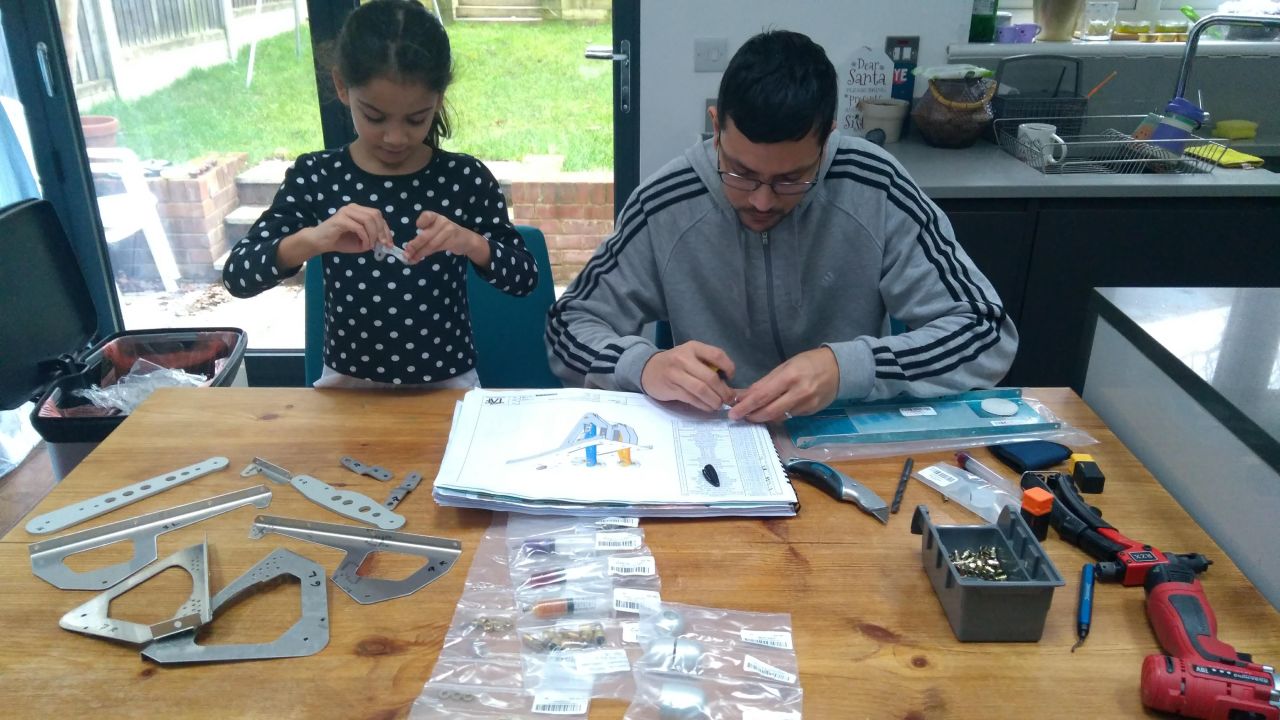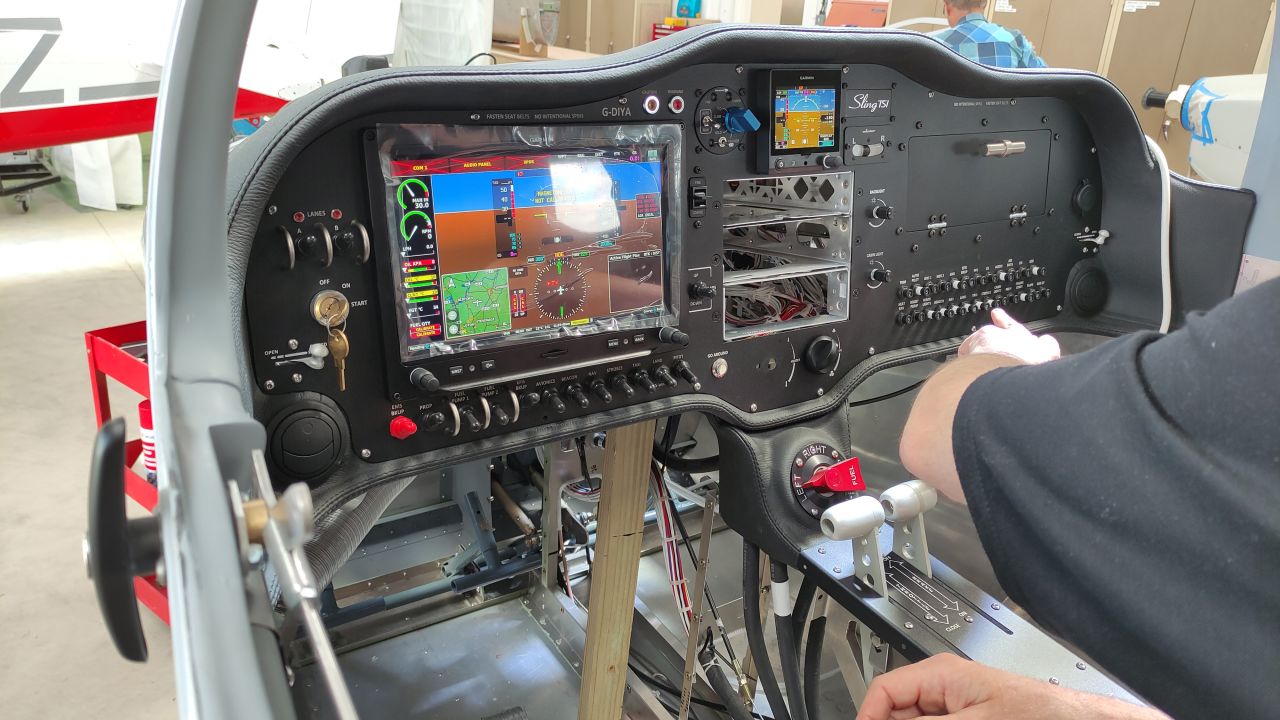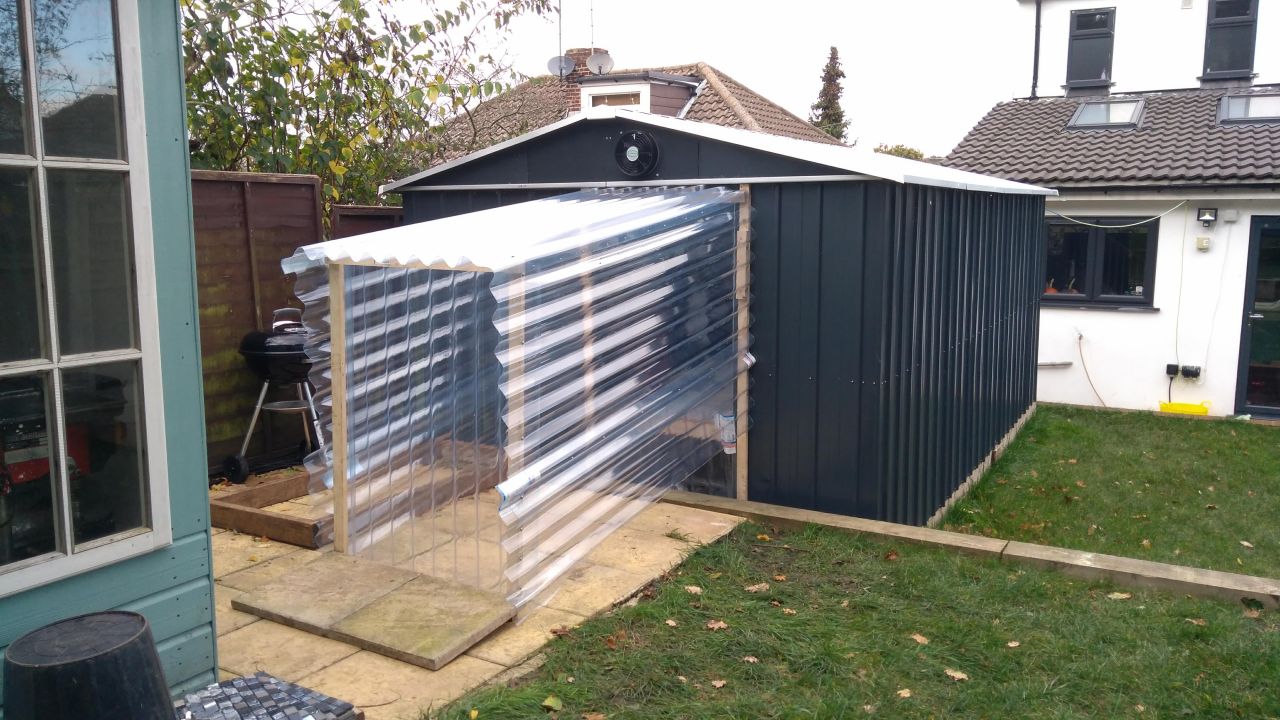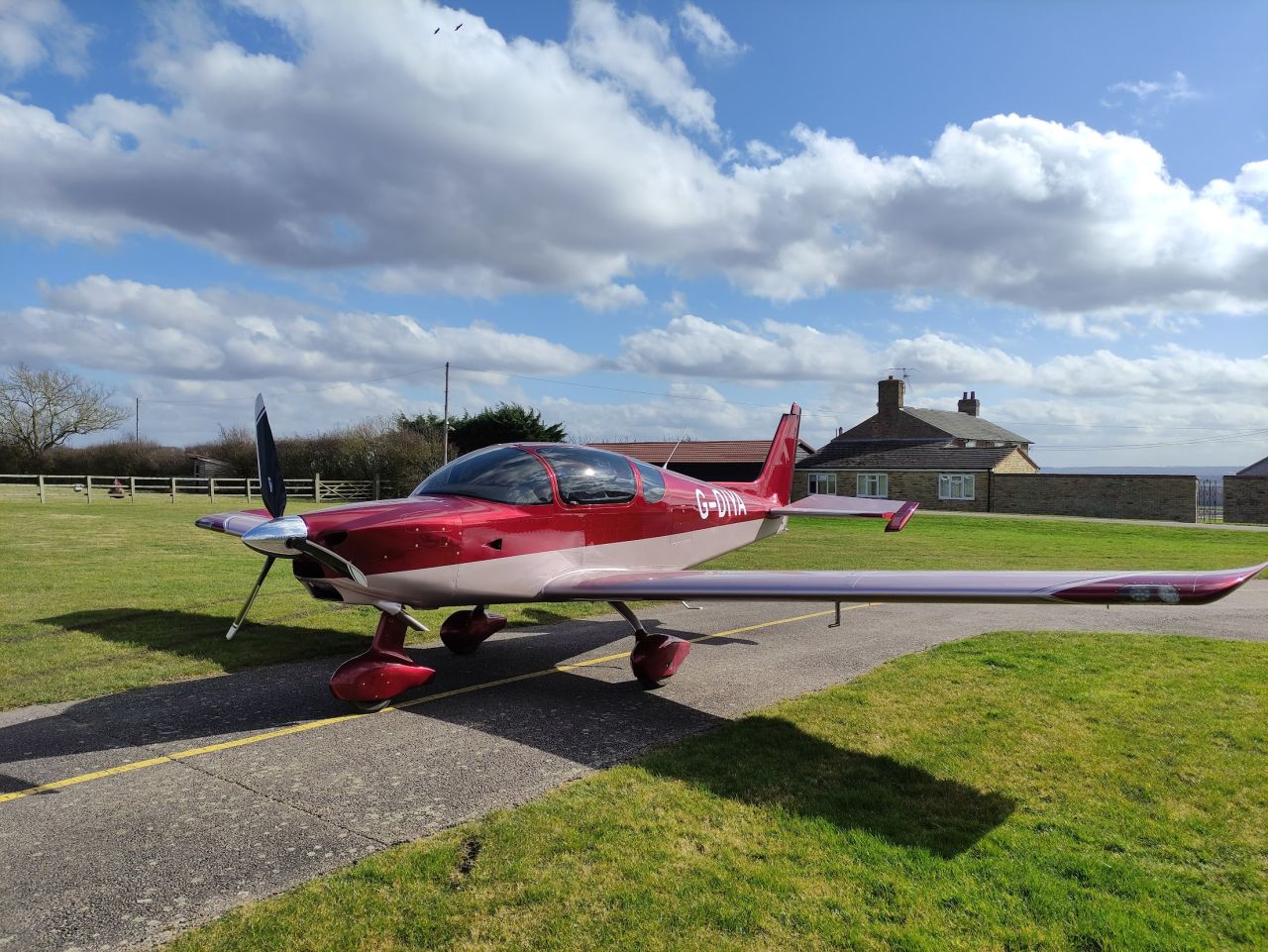It wasn’t until he moved near to an airfield in the UK over a decade ago that mechanical engineer Ashok Aliseril Thamarakshan began to seriously consider learning to fly a plane.
He got his first taste of flying a few years later, when his wife Abhilasha bought him a 30-minute flight experience for his birthday.
Aliseril, who is based in English county Essex, booked in some flying lessons at a local airfield and flew to the Isle of Wight, an island off the south coast of England, during his first session.
“That was quite an eye opener into how it [flying] gives you the freedom to just go places if you have that ability, and access to an aircraft,” he tells CNN Travel. “So that really got me hooked.”
Aliseril got his private pilot’s license in 2019 and soon began hiring planes for short flights.
Amateur build

But as his family grew – he and Abhilasha now have two daughters, the two-seater planes typically available for private hire became even less suitable, and he began to mull over the idea of buying his own plane.
Aliseril briefly considered buying an older aircraft, and looked at some that had been built in the 1960s and 1970s.
However, he says he felt uneasy about the prospect of flying his family in an older aircraft that he wasn’t familiar with, and didn’t think it would be a “comfortable journey.”
Aliseril began to look into the possibility of building a plane himself, reasoning that this would allow him to gain a better understanding of the aircraft so that it would be easier to maintain in the long term.
After researching self-assembly aircraft kits, he came across a four-seater plane manufactured by South African company Sling Aircraft that ticked all the right boxes.
In January 2020, Aliseril flew to the Sling Aircraft factory facility in Johannesburg for the weekend in order to take the Sling TSi aircraft on a test flight and was so impressed that he decided to purchase it.
“This was pre Covid, where travel was still very easy at the time,” he explains. “I ordered the first kit when I got back. And by the time it arrived, the UK was in full lockdown.”
Aliseril says his colleagues, some of whom had experience with building aircraft, initially offered to help with the build. But the restrictions brought about by the Covid-19 pandemic, which had spread across the world by this point, meant that this wasn’t possible.
Home assembly

Undeterred, he constructed a small shed in his back garden and planned out the different stages of the project, which would be monitored by the Light Aircraft Association, a UK representative body that oversees the construction and maintenance of home-built aircraft, under an approval from the UK Civil Aviation Authority (CAA).
The rules for amateur built aircraft differ slightly from country to country. In the US, the Federal Aviation Administration (FAA) has an experimental airworthiness category where special airworthiness certificates can be issued to kit built aircraft.
Amateur-built airplanes in the UK are investigated by the CAA, who will issue a “Permit to Fly” once satisfied that the aircraft is fit to fly.
Although the start of the build was delayed slightly due to the Covid-19 restrictions in place in the UK at the time – the Light Aircraft Association inspector assigned to the project was required to visit his working space beforehand – Aliseril was able to begin in April 2020.
While he notes that his engineering background helped in some ways, he believes that it was actually his home improvement experience that proved most useful while constructing the aircraft, which has a length of 7.175 meters and a height of 2.45 meters.
“These aircraft kits are designed for any amateur to build, provided you’re a bit hands-on and you’ve got experience working with some specialist tools,” he adds, describing the detailed “Ikea furniture type instructions” with drawings that came with the kit.
“I would say generally, anyone can get involved in these sorts of builds.”
Lockdown project

Aliseril completed the work himself, drafting in Abhilasha to assist with some of the sections that required more than one pair of hands. Their eldest daughter Tara, now seven, was on hand for tasks such as removing the plastic from each of the components.
By the end of summer 2020, Aliseril had built the tail and the wings. He began constructing the fuselage section in October, when the next part of the kit arrived.
Although he’d initially planned to hire a workshop to construct the aircraft, Aliseril feels that creating a workspace at his home was the better choice.
“I could just step into the shed and work on it,” he says. “So having everything just in the back garden really helped, even though space was tight.”
Each stage of the project had to be signed off by an inspector before he could move onto the next task – the Light Aircraft Association completed around 12 inspections in total.
Once the majority of the components were constructed, and it was time to put the aircraft together, Aliseril moved everything from his home to a hangar near Cambridge for the final assembly and engine fit. The aircraft passed its final inspection a few months later.
It was one of the first Sling TSi homebuilt aircraft constructed in the UK. G-Diya, named after his youngest daughter, was signed off for its first flight in January 2022.
Aliseril recalls waiting on the ground anxiously as a test pilot took the plane he’d spent 18 months building up into the air.
Taking flight

“He took it up for about 20 minutes, and then he came back,” he says. “It was a big relief. I couldn’t lift my head up to see what was happening [during the test flight].”
That first flight was hugely significant in many ways.
“With these build projects, everyone calls it a project until it’s first flown,” he explains. “Once it’s flown, it’s always called an aircraft. You never call it a project anymore. That’s psychologically a big step.”
When it was time to fly the aircraft for the first time himself, Aliseril was accompanied by another experienced test pilot.
While he admits to being decidedly cautious, the test pilot was “throwing the aircraft about as if it was a racing car.”
“I was feeling very nervous, I didn’t want to put any extra stress on it,” Aliseril explains. “But he [the test pilot] was really pushing it to the limits. And it was good to experience that. I know that it [the aircraft] can handle this much.
“Once I landed, he [the test pilot] clapped his hands and said ‘Congratulations, you’ve just landed the plane you built.’ That was a great feeling.”
G-Diya, which has a range of 1,389 kilometers, went through a number of further test flights before it was issued with a permit to fly in May 2022.
The following weekend, Aliseril flew with his wife and daughters Diya and Tara, four, to the Isle of Wight, where they took a short taxi ride from the airfield to the beach.
“The kids were really happy,” he says. “So that sort of freedom. And the fact that we could just do that on a Saturday and still be back by 4 p.m. That was a great feeling.”
Over the past few months, Aliseril and his family have flown back to the Isle of Wight, and have also made trips to Skegness, a seaside town in eastern England and the village of Turweston in Buckinghamshire. They’ve been documenting their trips on Instagram.
In June 2022, he took a one-week trip around northern Europe with a pilot friend, and flew to the Czech Republic, Austria and Germany.
While Aliseril stresses that he’s still a relatively new pilot – he currently has around 125 hours of flying hours under his belt – his confidence is growing with every flight and he’s working towards flying to Europe with his family.
Family trips
“That’s the plan going forward,” he says. “We can take trips within the UK on a weekend, when the weather is good. And in the summer holidays, we can book out a week and then fly into Europe.”
For Aliseril, one of the main benefits of the plane, aside from the freedom it provides him and his family, is the friendships he’s formed with other pilots.
He was always mindful that owning an aircraft could become a financial burden, but has been able to get round this by working out an arrangement to share it with three others.
“To get your private license, it costs quite a bit,” he adds, before noting that many of those who’ve taken on similar projects are either retired, or are people “who have the time and financial status” to fund the process.
“I kind of knew that from the beginning, and thought I’d take that risk and try to do it myself,” he says. “I knew that once it was done, I would easily be able to find people to share that cost. And it’s worked out quite well [for me].”
Now that the aircraft is split equally between four people, “it’s only costing us around the price of an SUV,” adds Aliseril.
“It’s more fuel efficient in the air – it only takes about 20 liters of unleaded fuel per hour of flight,” he says. “So the fuel costs are pretty much equal to driving.”
There’s currently no hangar space at the airfields close to his home, so Aliseril is building a new hangar for the plane, which is still based near Cambridge, at an Essex airfield.
As for the cost of the build, the kit was priced at around £80,000 (about $91,000,) according to Aliseril, while added costs including avionics, as well as the plane’s Rotax engine, propeller and other supplies, brought the total up to around £180,000 (around $203,000).
He hopes that more young people will take on projects like this in the future, and points to shared aircraft ownership as a way to make things more cost efficient, as well as form connections in the aviation world.
“It becomes a communal thing,” he says. “You always have somebody to fly with if your family is not available. Also, having other pilots who are friends – you learn from each other.”
Correction: An earlier version of this story mixed up Aliseril’s eldest and youngest daughters. It also misstated the name of the Light Aircraft Association.






